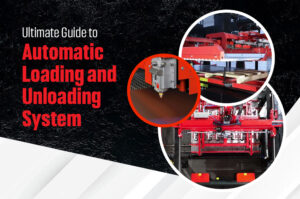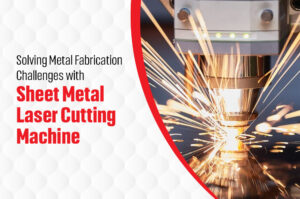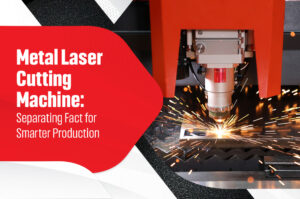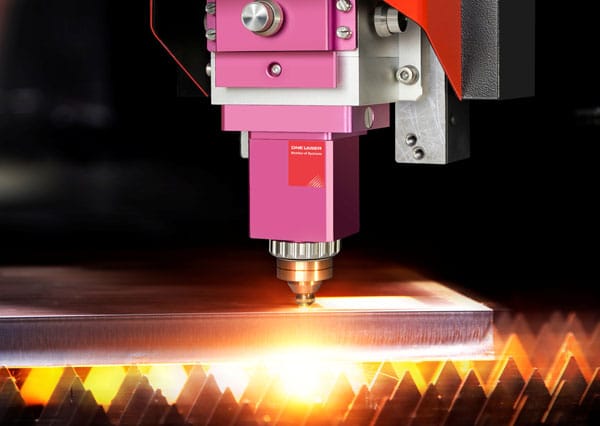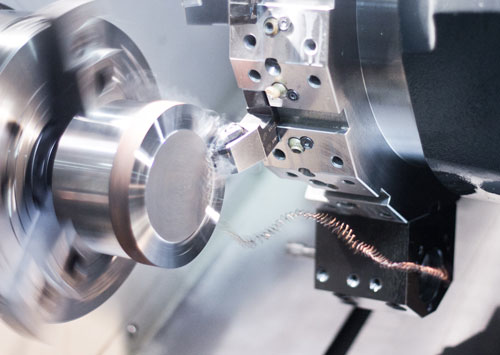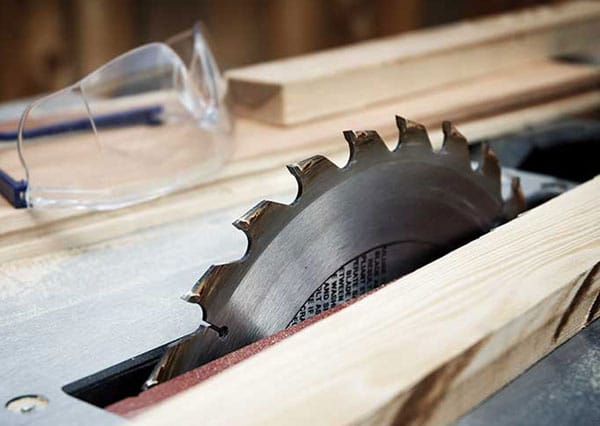Handling materials efficiently has always been a challenge in industrial settings. The process of moving raw materials, semi finished products, or finished goods requires precision, speed, and consistency. Traditionally, manual labor dominated this space, but it often led to delays, inconsistencies, and safety concerns. This is where the automatic loading and unloading system comes in, transforming how industries manage material flow.
By integrating automation into loading and unloading processes, businesses achieve better control over operations, reduce dependency on manual labor, and enhance overall productivity. Whether dealing with heavy sheets, delicate components, or bulk materials, these systems ensure seamless movement without disruption. We will also explore how companies can choose the right system and maintain it for optimal performance. Understanding these aspects will help businesses make informed decisions about automation and its role in modern production environments.
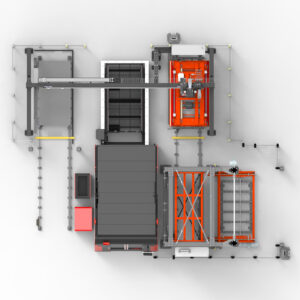 Understanding Automatic Loading and Unloading System
Understanding Automatic Loading and Unloading System
Material handling has evolved significantly, and automation now plays a critical role in ensuring efficiency. An automatic loading and unloading system is designed to transfer materials between different stages of production without manual intervention. These systems are widely used in industries where speed, precision, and safety are top priorities. At its core, this system consists of a combination of mechanical, electrical, and software-driven components that work together to move materials smoothly. It eliminates human errors, optimizes workflow, and maintains consistent production cycles. Unlike manual handling, where operators must lift, align, and position materials, an automatic loading and unloading system streamlines these steps with programmed accuracy.
Industries such as metal fabrication, woodworking, logistics, and automotive manufacturing rely on these systems to manage raw materials and finished goods efficiently. Whether feeding sheets into cutting machines, transferring items to storage units, or loading heavy materials onto production lines, these automated solutions ensure seamless operation with minimal downtime.
Core Components of an Automatic Loading and Unloading System
An automatic loading and unloading system is not a single machine but a combination of several integrated components working together. Each part plays a crucial role in ensuring smooth and precise material movement. Understanding these components helps businesses select the right system for their needs.
1. Conveyor Mechanisms
The foundation of any automatic loading and unloading system is its conveyor setup. These can be belt conveyors, roller conveyors, or chain driven systems, depending on the material type and industry requirements. They transport materials from one point to another with controlled speed and accuracy.
2. Robotic Arms and Lifting Devices
In applications that require precise handling, robotic arms and lifting mechanisms take over. These systems can grip, lift, and place materials without damage, making them essential for delicate or heavy materials. Their movements are pre-programmed to ensure repeatability and precision.
3. Sensors and Monitoring Systems
Modern automatic loading and unloading systems are equipped with sensors that detect material position, weight, and alignment. These sensors communicate with control software to adjust movements in real time, preventing errors and improving efficiency.
4. Control Software and Integration
Automation is only as good as the software controlling it. Advanced control systems ensure that all components work in sync. They allow operators to monitor operations, adjust settings, and integrate the loading and unloading system with existing production lines.
Advantages of Automatic Loading and Unloading System
Adopting an automatic loading and unloading system offers businesses multiple benefits, transforming how materials are handled. From minimizing human intervention to improving accuracy, these systems play a critical role in optimizing industrial operations.
1. Increased Efficiency and Faster Production
Manual loading and unloading often lead to inconsistencies and delays. With automation, materials move seamlessly through the production line, reducing downtime. The system operates at a constant speed, ensuring that every stage of production receives materials on time, boosting overall output.
2. Reduced Labor Costs and Dependence on Workforce
Hiring and training workers for material handling can be expensive. An automatic loading and unloading system minimizes the need for manual labor, allowing businesses to allocate human resources to more skilled tasks. This not only cuts costs but also improves workplace efficiency.
3. Improved Workplace Safety
Handling heavy or hazardous materials manually increases the risk of injuries. Automated systems eliminate direct human contact, reducing accidents caused by lifting, slipping, or improper handling. This leads to a safer working environment, ensuring compliance with workplace safety regulations.
4. Consistency and Precision in Material Handling
Automation removes variability in the handling process. The system follows programmed instructions, ensuring that materials are loaded and unloaded with precise positioning. This is particularly important in industries where even slight deviations can affect product quality.
5. Better Utilization of Space
Traditional material handling methods require extra space for manual movement and staging. Automated systems are designed for compact and organized workflows, maximizing available floor space and optimizing storage areas.
Applications Across Industries
The automatic loading and unloading system is not limited to a single sector. It has transformed operations in multiple industries by enhancing material handling efficiency, reducing downtime, and improving overall productivity. Here’s how different industries benefit from automation in loading and unloading processes:
1. Manufacturing Industry
Factories rely on precise and timely material movement to maintain production flow. Automated systems ensure raw materials, semi-finished goods, and finished products are transported seamlessly between workstations, minimizing bottlenecks and manual handling errors.
2. Metal Fabrication and Sheet Processing
Sheet metal laser cutting machines, Tube laser cutting machines, and heavy components require careful handling to avoid damage. Automated systems precisely load and unload these materials onto cutting, bending, or welding machines, ensuring accuracy while reducing material waste.
3. Automotive Industry
In vehicle assembly plants, automated systems streamline the movement of car parts, chassis, and components between production stages. This results in a faster assembly process and ensures uniformity in manufacturing.
Selecting the Right Automatic Loading and Unloading System
Choosing an automatic loading and unloading system requires careful evaluation of business needs, production demands, and operational constraints. Not all systems are the same, and selecting the right one ensures efficiency, cost effectiveness, and long term reliability.
1. Assessing Industry Specific Requirements
Each industry has unique handling needs. A system designed for sheet metal processing may not be ideal for warehouse logistics. Understanding material type, weight, size, and movement frequency helps in selecting a suitable automation solution.
2. Evaluating Load Capacity and Speed
The system’s capacity should match production demands. If a factory operates on high volume processing, a slow or low-capacity system could create bottlenecks. Ensuring the system can handle the required weight and speed is crucial for uninterrupted workflow.
3. Integration with Existing Machinery
A well designed automatic loading and unloading system should work seamlessly with existing production equipment. Compatibility with CNC machines, conveyors, robotic arms, or storage systems allows for a smooth transition to automation without costly modifications.
4. Space Utilization and System Footprint
Factory or warehouse space constraints play a significant role in system selection. Compact, modular systems that optimize available floor space while maintaining accessibility for maintenance are preferred.
Maintenance and Optimization of Automatic Loading and Unloading System
Investing in an automatic loading and unloading system is just the first step. To maximize efficiency and ensure long term performance, regular maintenance and system optimization are essential. A well maintained system operates smoothly, reduces downtime, and extends the lifespan of components.
1. Routine Inspection and Preventive Maintenance
Regular inspections help identify potential issues before they escalate. Checking mechanical components, sensors, and moving parts ensures everything functions correctly. Preventive maintenance, such as lubrication and cleaning, keeps the system in optimal condition.
2. Software Updates and Performance Monitoring
Most modern systems rely on software for control and coordination. Regular updates improve efficiency, introduce new features, and enhance security. Performance monitoring tools track system efficiency, detecting slowdowns or irregularities that may require adjustments.
3. Proper Calibration and Alignment
Misalignment can cause uneven loading, material jams, or equipment damage. Routine calibration ensures that the system positions and moves materials precisely, preventing unnecessary wear and tear.
4. Training for Operators and Technicians
Even with automation, human oversight is necessary. Training operators on proper usage, troubleshooting, and basic maintenance reduces errors and increases operational efficiency. Technicians should also be skilled in handling repairs and software updates.
5. Predictive Maintenance with IoT and AI
Advanced automatic loading and unloading systems now incorporate predictive maintenance features. IoT enabled sensors collect real time data, detecting component wear before failure occurs. AI driven analytics help schedule maintenance at the right time, minimizing unexpected breakdowns.
Why Choose Business Point International for Your Automation Needs?
At Business Point International, we provide a wide range of industrial automation solutions designed to improve efficiency and productivity. Our expertise extends beyond automatic loading and unloading systems to include fiber laser cutting machines, UV printers, digital cutting machines, and signage solutions. We help businesses in the UAE and beyond upgrade their operations with high performance technology that meets modern industry demands.
What Makes Us the Right Choice?
Complete Automation Solutions – We offer a variety of machines, including fiber laser cutting machines, roll to roll UV printers, solvent printers, eco solvent printers, and digital cutting machines, ensuring businesses have the right tools for their needs.
Industry-Specific Customization – Our automation systems are designed for industries such as metal fabrication, signage, textile printing, and manufacturing, allowing businesses to achieve better results with minimal effort.
Smooth Integration with Existing Equipment – Our machines work efficiently with your current setup, making it easy to transition to automation without major changes.
Reliable Support and Maintenance – We provide full assistance, from installation and training to long term maintenance, ensuring smooth and continuous operation.
Sustainable and Future-Ready Technology – Our UV printers, laser marking machines, and digital cutting machines are built with energy efficiency and long term use in mind, helping businesses lower costs and reduce waste.
At Business Point International, we focus on providing advanced solutions that improve precision, reduce manual work, and enhance overall productivity. If you want to upgrade your operations with high quality automation, our team is ready to help.
Business Point International at SteelFab 2022 – Showcasing Our Fiber Laser Cutting Machine

Business Point International proudly participated in SteelFab 2022 at Expo Centre Sharjah, UAE. Exhibiting our latest advancements in fiber laser cutting machine. Our highlights video captures the precision, speed and automation that define our machinery and designed to meet the evolving demands of the metal fabrication industry. Experience how our high-performance machines and dedicated service are setting new benchmarks in manufacturing excellence. Stay ahead with BPI – Your trusted supplier in industrial machinery!
Also, Check Out Our SteelFab Event Highlights Video (2019 – 2025)
SteelFab 2019 – Exhibited our metal fabrication machines and high-speed fiber laser cutting machine. Watch the highlights: [https://youtu.be/QWVEXlSJVCc]
SteelFab 2020 – Showcasing advanced fiber laser cutting machine. Check it out: [https://youtu.be/RFrPcK-oNYo]
SteelFab 2022 – A stage for revolutionary metal processing machines and modernized fiber laser cutting machine. Watch here: [https://youtu.be/Uc8AufxYbGI]
SteelFab 2024 – Bringing together metal fabrication industry leaders and technology pioneers. Experience it here: [https://youtu.be/OM5jt_iJzfQ]
SteelFab 2025 – The future of fiber laser cutting machine and metal fabrication unfolds. See the event highlights: [https://youtu.be/JI1rplS7uDI]
Conclusion
The adoption of an automatic loading and unloading system has transformed industrial operations, offering unmatched efficiency, precision, and cost savings. From manufacturing and warehousing to metal fabrication and automotive assembly, automation streamlines material handling, reducing manual labor and minimizing errors. As technology advances, AI driven decision making, IoT integration, and sustainable designs will further enhance these systems, making them indispensable for modern industries. By investing in the right automation solutions, businesses can achieve greater productivity, optimize workflow, and future proof their operations. Selecting a system that aligns with production demands, integrates seamlessly with existing machinery, and requires minimal maintenance ensures long term operational success.




